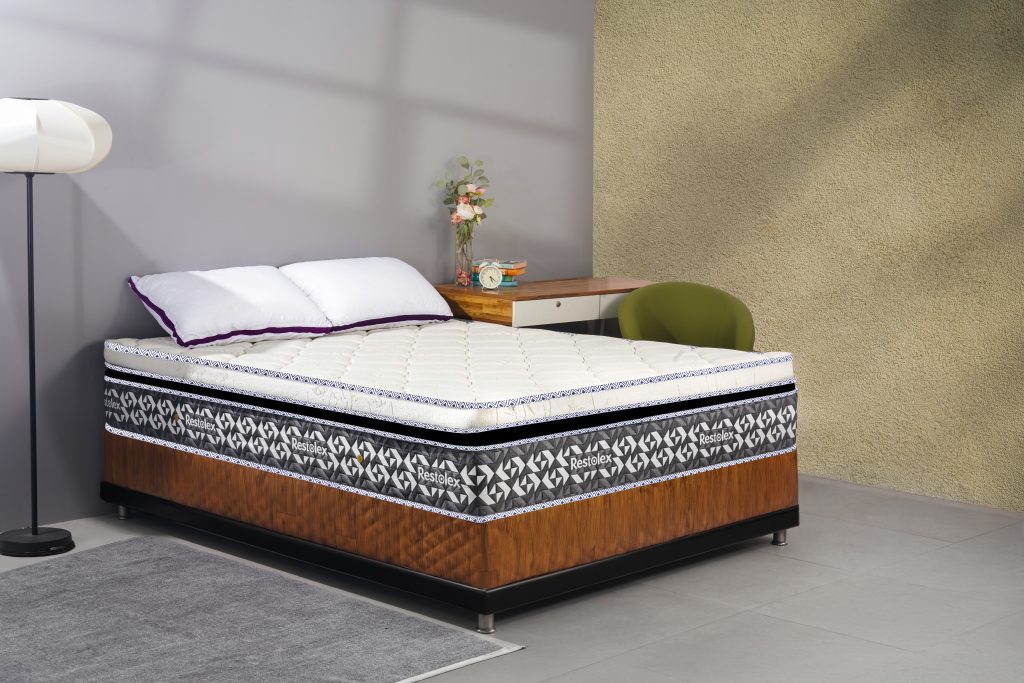The Journey from Factory to Bed: How Sustainable Mattresses Are Made
When it comes to sustainable living, the mattress you sleep on plays a surprisingly significant role. Sustainable mattresses aren’t just better for the environment—they’re healthier, longer-lasting, and crafted with care. But what exactly goes into creating these eco-friendly sleep solutions? From sourcing raw materials to the final product that supports your nightly rest, here’s a step-by-step look at how sustainable mattresses are made.

1. Sourcing Natural and Renewable Materials
The journey begins with choosing sustainable, biodegradable, and renewable materials. Common options include:
- Natural Latex: Harvested from the sap of rubber trees, latex is a renewable and biodegradable material. It’s durable, breathable, and free from synthetic chemicals.
- Organic Cotton: Grown without harmful pesticides or fertilizers, organic cotton ensures a soft, hypoallergenic surface while promoting eco-friendly farming.
- Wool: Sourced ethically from sheep, organic wool acts as a natural fire retardant and moisture-wicking layer.
- Coir (Coconut Fiber): Made from coconut husks, coir provides natural firmness and support in mattresses.
Why It Matters:
Using natural materials minimizes the environmental impact and eliminates the need for synthetic, chemical-laden components that can harm both the planet and your health.
2. Responsible Farming and Ethical Harvesting
Sustainable mattresses rely on responsible farming practices.
- Rubber Plantations: Latex is tapped from trees in a process that doesn’t harm the plant, allowing it to continue producing sap for decades.
- Organic Farming: Cotton and wool farms adhere to organic certifications, avoiding pesticides, excessive water use, and animal cruelty.
Certification Labels to Look For:
- GOTS (Global Organic Textile Standard)
- OEKO-TEX®
- Rainforest Alliance (for latex)
3. Minimal Impact Manufacturing
After materials are sourced, they are processed in factories that prioritize eco-friendly manufacturing techniques:
- Energy Efficiency: Many sustainable mattress companies power their factories with renewable energy sources like solar or wind.
- Water Conservation: Processes are optimized to reduce water use, with some manufacturers recycling water within the factory.
- Non-Toxic Adhesives: Instead of chemical-based glues, sustainable mattresses often use water-based or non-toxic adhesives to bind layers.
4. Layering for Comfort and Support
The design of a sustainable mattress often involves layering materials to achieve the perfect balance of comfort, support, and durability:
- Base Layer: Often made of coir or supportive natural latex for a firm foundation.
- Middle Layer: High-density natural latex or hybrid foam for responsive support and motion isolation.
- Top Layer: Soft organic wool or cotton for plush comfort and breathability.
These layers are hand-assembled or minimally processed to avoid synthetic components and excessive energy use.
5. Sustainable Packaging and Shipping
Once the mattress is crafted, it’s carefully packed for delivery. Sustainable brands prioritize:
- Minimal Packaging: Using recyclable or biodegradable materials like cardboard or compostable wraps.
- Compressed Shipping: Vacuum-sealed or rolled to reduce shipping volume and carbon emissions during transport.
Innovative Practices:
Some companies use local production facilities to reduce the carbon footprint of long-distance shipping.
6. Durable and Long-Lasting Design
A key part of sustainability is creating a product that stands the test of time. Sustainable mattresses are built for durability:
- High-Quality Materials: Natural latex, organic cotton, and wool are inherently long-lasting.
- Extended Warranties: Many brands offer warranties of 10-25 years, reflecting the durability of their products.
7. End-of-Life Recycling or Composting
Unlike traditional mattresses, sustainable options are designed with the end of their lifecycle in mind:
- Recyclable Components: Materials like latex and coir can often be recycled into new products.
- Composting: Organic materials can be composted, leaving zero waste behind.
- Take-Back Programs: Some brands offer take-back or recycling programs to ensure your mattress doesn’t end up in a landfill.
Why Choose a Sustainable Mattress?
- Healthier Sleep: Free from harmful chemicals, sustainable mattresses promote a cleaner sleep environment.
- Environmental Impact: Every sustainable mattress reduces waste, conserves resources, and lowers carbon emissions.
- Ethical Practices: Supporting brands that prioritize fair labor and responsible sourcing contributes to a more equitable global economy.
1. Eco vs. Traditional Mattresses: Why Sustainability Wins Every Time.
2. The Benefits of Choosing Organic Bedding for a Greener Planet.
Sleep Sustainably, Live Responsibly
From the sap of a rubber tree to the comfort of your bed, sustainable mattresses are crafted with care for the planet and your health. Choosing an eco-friendly mattress is more than an investment in sleep—it’s a commitment to a better world.
Ready to start your journey toward sustainable rest? Explore our collection of eco-friendly mattresses and take the first step toward greener, healthier sleep.
Newsletter Sign Up
Join our community to receive exclusive updates, sleep tips, and special offers directly in your inbox. Stay informed and be the first to know about our latest products and promotions.

Contact Us
- 9/1, Ashokapuram, Industrial Suburb, Yeshwanthpur, Bengaluru-560022, India
-
care@restolex.com
Orders@restolex.com
Support@restolex.com -
+91-8750054466
+91-8123018558
